
 |
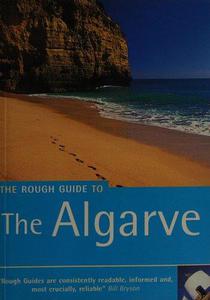 The Rough Guide to The Algarve By Matthew Hancock 2002 | 368 Pages | ISBN: 1858288312 | PDF | 97 MB INTRODUCTION "The Algarve has always been at variance with itself, more Mediterranean than Atlantic, as much African as European, its Islamic heritage visible in a Christian society. It is altogether, in its 5,000 square kilometres, a contradictory cosmos." from The Portuguese by Marion Kaplan With some of Europes best and cleanest sandy beaches, picturesque rocky coves and year-round sunshine, this contradictory cosmos has become justifiably the most popular region in Portugal for both overseas visitors and the Portuguese themselves. Popularity has led to heavy development on the central coastal strip from Faro west to Lagos. But even here you can find quiet cove beaches and vestiges of traditional Portugal amongst the panoply of villas, hotels and sports complexes. It is this combination of natural beauty and superb facilities that have made the region popular with celebrities and sports stars from Cliff Richard to the Beckhams. Development is much less pronounced at the two extremes of the Algarve. Around Sagres and along the west coast, low-key resorts are close to a series of breathtaking wave-battered beaches, popular with windsurfers. To the east, relaxed resorts lie within reach of island sandbanks boasting giant swathes of dune-backed beaches. Away from the coast, inland Algarve has a surprisingly diverse landscape, with lush orange groves and wooded mountains offering superb walking territory around Monchique and Silves to the west and Serra do Caldeirão in the centre. In the east, a more wildly beautiful landscape marks the border with Spain along the fertile Guadiana river valley. 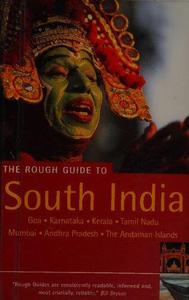 The Rough Guide to South India By Rough Guides 2004 | 736 Pages | ISBN: 1843531038 | PDF | 37 MB The guide opens with a colour section introducing the region's highlights with some photography and essential information on the region's diverse attractions, from enjoying an Ayurvedic massage to exploring the ruins at Hampi. It offers comprehensive and practical advice on everything from finding the best places to stay and the most comfortable means of transport, to spotting elephants in the Cardamon Hills and negotiating Mumbai. It also provides an informative insight into South India's history, religions, architecture, music and dance. There are also maps and plans for every region and town. 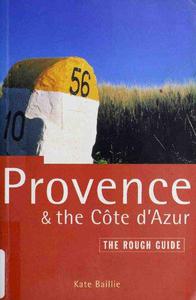 The Rough Guide to Provence & the Cote d'Azur By Kate Baillie, Danny Aeberhard, Rachel Kaberry 1999 | 448 Pages | ISBN: 1858284201 | PDF | 71 MB INTRODUCTION The ancient Provenal version of Genesis maintains that prior to introducing Adam, the Creator realized he had several materials left over: large expanses of celestial blue, all kinds of rocks, arable soil filled with seeds for a sumptuous flora, and a variety of as yet unused tastes and smells from the most subtle to the most powerful. "Well", He thinks, "why don't I make a beautiful resum of my world, my own special paradise?" And so Provence came into being. This paradise encompasses the snow-peaked lower Alps and their foothills, which in the east descend to the sea's edge, and to the west extend almost to the Rhne. In central Provence the wild high plateaux are cut by the deepest cleft in the surface of Europe - the Grand Canyon du Verdon. The coastal hinterland is made up of range after range of steep forested hills in which the warm scent of pines, eucalyptus and wild herbs intoxicates the senses. The shore is an everchanging series of geometric bays giving way to chaotic outcrops of glimmering rock and deep, narrow inlets, like miniature Norwegian fjords - the calanques. In the Camargue, the shoreline itself becomes an abstraction as land and sea merge in infinite horizons. Away from the Rhne delta there is nowhere that does not have its frame of hills, or mountains, or strange sudden eruptions of rock. But all these elements would be nothing without the Mediterranean light, which is at its best in spring and autumn. It is both soft and brightly theatrical, as if each landscape had lighting rigged up by an expert for maximum colour and definition with minimum glare. It is no surprise that of all the arts, painting should be the one that owes so much of its European history over the last hundred years to the beauty and escapism of this world. Yet Provence and its coast were far from being an earthly paradise for their early inhabitants. As with most mountainous regions, the soil is poor and cultivation difficult away from the rivers. The low-lying areas of the Camargue and Rhne Valley were marshes or rubbly plains subject to inundation. The coast had no natural defences of rough seas and high cliffs to dissuade invaders. So it was that communities clustered on easily defensible hilltops - the village perchs - with their tight labyrinths of medieval streets, passageways and winding stairs leading inexorably up to a chteau fort. For hundreds of years, Provence remained a prime target for foreign invaders. The ancient Greeks established bases on the coast and on the Rhne, including Massalia and Nikea - modern-day Marseille and Nice - and, later, the Romans cleared a route all along the coast to their cities on the Rhne. Settlers came from all over northern Europe and from across the Mediterranean, and if this wasn't enough, Provence's independence was also contested with France, the Holy Roman Empire, Burgundy, Savoy and the Popes, with internal feuding between rival fiefdoms aggravating the insecurity of daily life. After just fifty years of reunification with France, Provence was again invaded, and within a hundred years was suffering the bloodiest of French civil wars, the Guerres de Religion. Legacies of this turbulant past include some of the best Roman monuments in France, plus great reminders of the medieval age, such as the palace of the Popes in Avignon; the three great monasteries of Silvacane, Thoronet and Snanque, built by the Cistercian order in the twelfth century; the ruined city of Les Baux; the border fortresses of Tarascon and Sisteron; and the frescoes and paintings in the village churches north of Nice. By the 1800s, the character of coastal Provence was already beginning to change. Foreign aristocrats and royals, who had already turned Nice into Europe's most fashionable winter watering hole, began to spread their influence east and westwards. Tiny fishing villages such as Cannes, Villefranche, Le Lavandou and St-Tropez began to follow the course that Nice had taken, with avant-gardists in art and lifestyle and successions of celebrities gradually discovered how much simple and sophisticated pleasure this coast could provide. By the 1950s mass tourism on an upmarket scale began to take off in these parts, the Sixties brought the starlets and the hippies in their droves, and in the 1970s the French government began to realize the horror that their greatest tourist asset was threatening to become. Today, the Cte d'Azur is one of the most built-up, overpopulated and expensive stretches of coast anywhere in the world. Yet between the urban conurbations and the tourist developments there still lies the remarkable scenery that drew artists here in their droves in the decades either side of 1900. Seduced by the light and relative ease of living, they bade farewell to the gloom of northern winters and set themselvers up on the Cte d'Azur, making the region as much a part of the European art scene as Montmartre and Montparnasse. The great names of the Modern period who painted and sculpted on this coast include Matisse, Renoir, Signac, Lger, Dufy, Mir--, Bonnard, Chagall, Cocteau, Drain, Modigliani, Soutine and Picasso all of whom came in summer and shocked the natives by swimming in the sea. Many of their works are permanently exhibited in superb museums from St-Tropez to Menton; reason in itself for a visit to the Cte today. The one great artist native to Provence is Czanne, who was born in Aix in 1839. Many of his canvases were inspired by the landscapes around his home town but very few remain in the region. Because of his relationship with his subjects, a pilgrimage to the Mont Ste-Victoire and other favourite scenes is still compelling. The man whose works on show outnumber any other artist is Hungarian- born Vasarely, who chose Aix and Gordes as centres for his studies into an all- embracing concept of art, science, architecture and social life. In and around Arles and St-Rmy you can follow the sad passage of Van Gogh, but again there are hardly any original paintings to be seen. 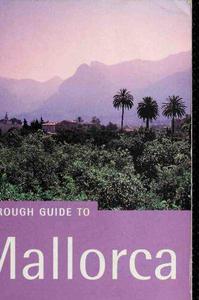 The Rough Guide to Mallorca By Phil Lee 2001 | 304 Pages | ISBN: 1858287030 | PDF | 45 MB INTRODUCTION Few Mediterranean holiday spots are as often and as unfairly maligned as Mallorca. The largest of the Balearic Islands, an archipelago to the east of the Spanish mainland which also comprises Menorca, Ibiza and Formentera, Mallorca is commonly perceived as little more than sun, sex, booze and high-rise hotels so much so that theres a long-standing Spanish joke about a mythical fifth Balearic island called "Majorca" (the English spelling) which is inhabited by an estimated eight million tourists a year. However, this image, spawned by the helter-skelter development of the 1960s, takes no account of Mallorcas beguiling diversity. Until well into the twentieth century, Mallorca was a sleepily agrarian backwater, left behind in the Spanish dash to exploit the Americas from the sixteenth century onwards. Mass tourism has reversed the islands fortunes since World War II, bringing the highest level of disposable income per capita in Spain, but the price has been profound social transformation and the disfigurement of tracts of the coastal landscape. However, the spread of development is surprisingly limited, essentially confined to the Bay of Palma, a thirty-kilometre strip flanking the island capital, and a handful of mega-resorts notching the east coast. Elsewhere, Mallorca is much less developed than many other parts of Spain. Palma, Mallorcas capital and the Balearics one real city, is a bustling, historic place whose grandee mansions and magnificent Gothic cathedral defy the expectations of many visitors. To the east of Palma stretches Es Pla, an agricultural plain that fills out the centre of the island, sprinkled with ancient and seldom-visited country towns. On either side of the plain are coastal mountains. In the west and to the north, the rugged Serra de Tramuntana hides beautiful cove beaches, notably Cala de Deià and Platja de Formentor, and deep sheltered valleys. The range is crisscrossed with footpaths and makes for ideal hiking country, particularly in the cooler spring and autumn. Tucked away here too are a string of picturesque villages, such as Orient and Fornalutx, and a pair of intriguing monasteries at Valldemossa and Lluc. The gentler, greener Serres de Llevant shadow the coves of the east coast and culminate in the pine-clad headlands and medieval hill towns of the islands northeast corner. Theres a startling variety and physical beauty to the land, which, along with the mildness of the climate, has drawn tourists to visit and well-heeled expatriates to settle here since the nineteenth century, including artists and writers of many descriptions from Robert Graves to Roger McGough. 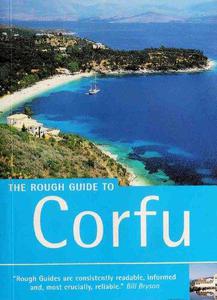 The Rough Guide to Corfu By Nick Edwards 2003 | 352 Pages | ISBN: 1843530384 | PDF | 38 MB INTRODUCTION Dangling off the northwest coast of mainland Greece, at the point where the Adriatic meets the Ionian Sea, the lush green sickle of Corfu (Kérkyra) is the closest Greek island to Italy and almost brushes against Albania to the north. Historically, the island has always been on the margins of mainstream Greek history and at the mercy of northern invaders, whose cultures, particularly those of the Venetians and the British, fused with that of the island. Although not the largest of the Ionian Islands, it has long been the cultural heart of the group and the best known to foreigners, especially as it was one of the first Greek destinations to attract large numbers from abroad. Corfu has some of the best beaches in the archipelago no fewer than 33 of them were awarded blue flags in 2002 with idyllic bays that still retain echoes of the "delectable landscape" Lawrence Durrell described in Prosperos Cell. In the last decade islanders have worked hard to dispel the questionable reputation Corfu earned with the coming of mass tourism in the Sixties. Although there are a couple of destinations on the island where visitors still come to party hard, the majority of the resorts are relaxed, family-friendly affairs. These days you are as likely to meet someone visiting Corfu on a hiking holiday, or renting a villa, as holiday-makers on all-inclusive packages. Even the busiest resorts are only a few minutes walk away from quieter coastline and the interior. A little exploration further afield soon reveals authentic villages and unspoilt rural areas, where agriculture the other mainstay of the islands economy thrives. Corfu is a holiday destination that people return to again and again; many northern Europeans have been coming to the island for twenty or thirty years. One of the reasons they return beyond the landscape, the sunshine and some of the finest swimming and watersports in the Mediterranean is the welcome extended at all but the largest resorts. The Corfiots friendliness and kindness to strangers the quality of filoxenía can still astonish with its generosity and grace. 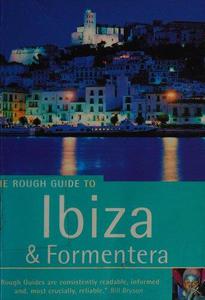 The Rough Guide Ibiza and Formentera By Iain Stewart 2003 | 400 Pages | ISBN: 1843530635 | PDF | 122 MB INTRODUCTION Ibiza is an island of excess. Widely acclaimed as the worlds clubbing capital, its a unique and almost absurdly hedonistic place, where the nights are celebrated with tremendous vitality. Thanks largely to the British tabloid press, the popular perception of Ibiza is of a charmless, high-rise party destination, but, while its true that high-octane techno tourism is central to the local economy, theres much more to the island than the club scene. Ibizas scenery is captivating dotted around its dazzling shoreline are more than fifty beaches, ranging from expansive sweeps of sand to exquisite, miniature coves beneath soaring cliffs. Many of the best beaches were insensitively transformed into functional holiday resorts in the 1960s, but plenty of pristine places remain. Ibizas hilly, thickly wooded interior is peppered with isolated whitewashed villages and terraced fields of almonds, figs and olives. The cosmopolitan capital, Ibiza Town, has most of the islands architectural treats, including the spectacular walled enclave of Dalt Vila, and a historic port area with hip bars, stylish restaurants and fashionable boutiques. Within easy reach are the small beach resorts of Talamanca and Figueretes, pleasant enough places to spend a day by the sea. However, for a better selection of beaches, head for the disparate east coast, dotted with family resorts such as Cala Llonga as well as beautiful undeveloped coves like Cala Boix and Cala Mastella, and the slender sands of Aigües Blanques, a naturist beach. The east coasts main town, Santa Eulària is an agreeable but unremarkable place, though youll find a decent restaurant strip here as well as historical and cultural interest on the Puig de Missa hilltop above the town. The isolated, remote northwest is Ibizas least developed region, with a rugged coastline ideal for hiking, the two small resorts of Portinatx and Port de Sant Miquel, and a smattering of spectacular coves including the cliff-backed bays of Cala den Serra, Benirràs and Portitxol. Inland, the scenery is equally impressive, dominated by the lofty pine-clad Els Amunts hills; between these peaks lie a succession of diminutive, isolated settlements such as Sant Joan and Sant Miquel, each with its own fortified whitewashed church and a rustic bar or two. Ibizas bohemian character, rooted in 1960s ethics, remains particularly strong in the north of the island, where youll find yoga retreats, ethnic bazaars and a large population of hippy-minded residents. On the western coast, Ibizas second largest town, Sant Antoni, is no architectural beauty, but can boast a dynamic bar and club scene, plus a selection of mellower chillout bars on its much-touted Sunset Strip, home of the legendary Café del Mar. Sant Antonis beaches tend to get packed in high season, but west of the town, Cala Conta and Cala Bassa offer luminous water and fine, gently shelving sands. The wildly beautiful south of the island boasts over a dozen beaches, from tiny remote coves like Cala Llentrisca and Cala Molí to the sweeping sands of Salines beach and Es Cavallet on the outskirts of Ibiza Town two of Ibizas most fashionable places to pose. Serene, easygoing Formentera, the other main island of the Pitiuses, is just a short ferry ride south of Ibiza. With few historical sights apart from some sombre fortress-churches and a few minor archeological ruins, Formenteras main appeal is its relaxed, unhurried nature and its miles of ravishing, empty sands that shelve into breathtakingly translucent water. Comprised of two flat promontories linked by a narrow central isthmus, the island is very thinly populated; even Sant Francesc Xavier, the attractive but drowsy capital, is little more than village-sized. Though Formentera is equally dependent on tourism, its much less developed than Ibiza; its best beaches Platja Illetes and Platja Migjorn have barely been touched, and the sole resort, Es Pujols, is a pleasantly small-scale affair.  The Right to Be Lazy: And Other Writings (NYRB Classics) by Paul Lafargue, translated by Alex Andriesse English | November 15, 2022 | ISBN: 1681376822 | True EPUB | 136 pages | 1.1 MB Now in a new translation, a classic nineteenth-century defense for the cause of idleness by a revolutionary writer and activist (and Karl Marx's son-in law) that reshaped European ideas of labor and production.  The Revolt Against Empire By R. M. West 2013 | 196 Pages | ISBN: 1492341606 | PDF | 1 MB "The Revolt Against Empire" is a nationalist novel depicting a war between a Chinese-led globalist empire and the European-American world.  Jacob Taylor, "The Rebel Allocator" English | ISBN: 173268832X | 2018 | 268 pages | EPUB | 426 KB Good capital allocation is the secret sauce of business success and investment returns. How could what you spend money on inside a business NOT be of utmost importance?I looked for a business person's guide to effective capital allocation for years. I thought, "What a nice gift to send to the CEOs of my portfolio companies!" as visions of outsized returns danced in my head. To my dismay, the search came up dry. I decided I'd have to write my own.I started at the individual customer transaction level and built all the way up to M&A, share buybacks, and beyond. To keep from boring you, I wrapped the lessons in a coming-of-age story of a college grad crossing paths with a wealthy Midwesterner. Imagine if The Karate Kid's Mr. Miyagi was modeled after a certain well-known Oracle. (OK, it's not The Brothers Karamazov, but I'm not the most original guy.)This book is for you if:** You're a business decision-maker who was never taught good capital allocation and you're wondering what you're missing. These lessons apply to small business people and Fortune 100 titans, and everyone in between. It doesn't matter if you're public or private, this book will help. ** You're building or advising start-ups. Today's disrupter is tomorrow's capital allocator. Learn it early and save yourself a ton of headache. ** You're an investor who appreciates the studies finding good capital allocators outperform the S&P 500 by 20x (no joke), and you want an easy way to help management and board members make better decisions. This book will also aid you in spotting those doing capital allocation right-such a huge advantage. (This was my original itch I wanted scratched. Part of me wanted to keep this book to myself and only send it to the management teams in my portfolio.) ** You're fresh out of school and want to learn the good, and sometimes bad, sides of business. Or you might want to kindle an appreciation for the wonders of capitalism. (Please don't send a copy of this book to Bernie Sanders.) And perhaps most importantly, your journey will be less painful when mixed with a splash of humor and movie-like pacing. Even if you're like me and read non-fiction almost exclusively, you're going to be glad you took a chance on this one. This is fiction for the non-fiction reader. Yours in improving capital allocation,Jake  Jenn Pelly, "The Raincoats' The Raincoats " English | ISBN: 150130240X | 2017 | 176 pages | PDF | 2 MB In 1979, from the basement of a London squat, the Raincoats reinvented what punk could be. They had a violin player. They came from Portugal, Spain, and England. Their anarchy was poetic. Working with the iconic Rough Trade Records at its radical beginnings, they were the first group of punk women to actively call themselves feminists. |